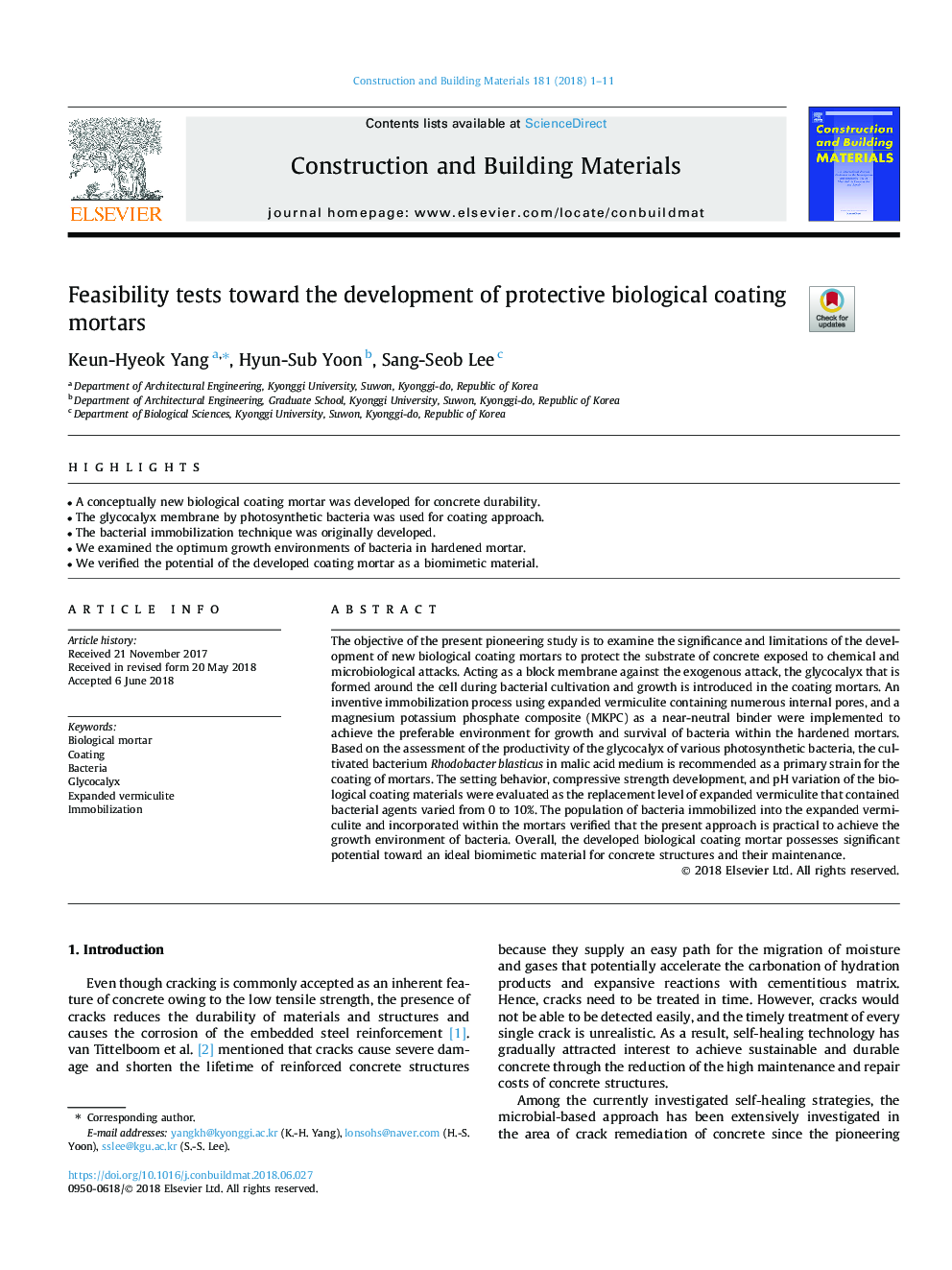| Article ID | Journal | Published Year | Pages | File Type |
|---|---|---|---|---|
| 6712350 | Construction and Building Materials | 2018 | 11 Pages |
Abstract
The objective of the present pioneering study is to examine the significance and limitations of the development of new biological coating mortars to protect the substrate of concrete exposed to chemical and microbiological attacks. Acting as a block membrane against the exogenous attack, the glycocalyx that is formed around the cell during bacterial cultivation and growth is introduced in the coating mortars. An inventive immobilization process using expanded vermiculite containing numerous internal pores, and a magnesium potassium phosphate composite (MKPC) as a near-neutral binder were implemented to achieve the preferable environment for growth and survival of bacteria within the hardened mortars. Based on the assessment of the productivity of the glycocalyx of various photosynthetic bacteria, the cultivated bacterium Rhodobacter blasticus in malic acid medium is recommended as a primary strain for the coating of mortars. The setting behavior, compressive strength development, and pH variation of the biological coating materials were evaluated as the replacement level of expanded vermiculite that contained bacterial agents varied from 0 to 10%. The population of bacteria immobilized into the expanded vermiculite and incorporated within the mortars verified that the present approach is practical to achieve the growth environment of bacteria. Overall, the developed biological coating mortar possesses significant potential toward an ideal biomimetic material for concrete structures and their maintenance.
Related Topics
Physical Sciences and Engineering
Engineering
Civil and Structural Engineering
Authors
Keun-Hyeok Yang, Hyun-Sub Yoon, Sang-Seob Lee,
